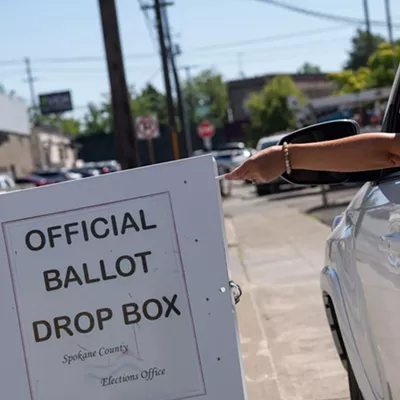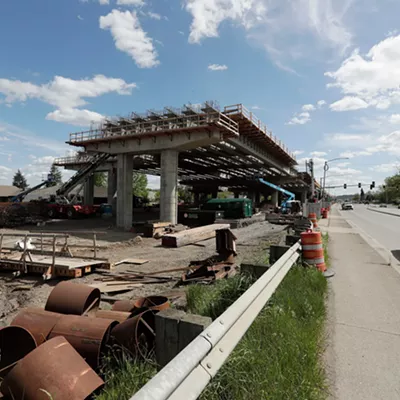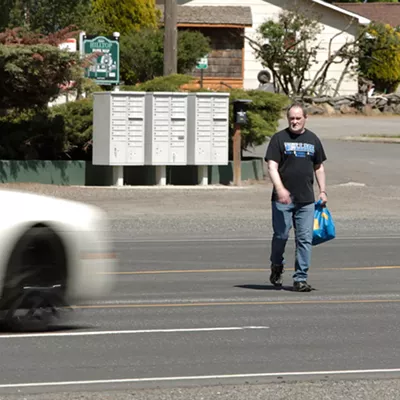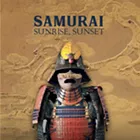The Lewis and Clark Expedition of 1804-1806 was more than a fascinating adventure. It marked the reuniting of two great human traditions that had separated hundreds of thousands of years ago. One of them settled Europe and crossed the Atlantic in 1492. The other spread east to Asia and at some point (much earlier; perhaps 13,000 years ago) crossed the Pacific.
These two traditions, the stone people and the machine people, finally came face to face on the American continent, strange to each other but yet the same. For human drama, it can hardly be matched.
Several of the exact sites of these meetings are easily reachable in a day's drive from Spokane. Highway 12 from Walla Walla to Clarkston follows the general route of the explorers on their return journey 200 years ago this month.
At the Pataha Creek Camp Site, two and a half miles outside of Dayton, Wash., the landscape is little changed since Lewis and Clark camped there. They were following an ancient Indian trail (still marked on the landscape by ruts) to the Clearwater River near the present town of Lewiston, Idaho.
Imagine Lewis and Clark and the corps of 33 (including one woman and one infant) at this place. The explorers, usually supposed to be carriers of the superior culture, were in fact by this point exhausted, tired and hungry. The entries in Capt. Clark's journal are full of emergencies. On top of everything else, they were hit by an unseasonal storm: "It rained, hailed, snowed and blowed with Great violence the greater portion of the day," Clark reported. The hunters had come back all but empty-handed. "We divided the last of our dried meat at dinner ... but a scant supper, and had not anything for tomorrow."
To read such reports on the very site, so that one can then look up at the steep, endless hills beyond the campsite, is to unfurl the imagination.
& lt;span class= "dropcap " & M & lt;/span & y colleague at Eastern Washington University, historian Dan Sisson, has made an art of teaching through this kind of experience. Every summer, he takes a group of students to explore parts of the trail. He has them fire a long-barreled rifle and try to figure out where they are using only the information from a compass and the lay of the land.
He has them sit in a pristine valley (a little away from the actual trail, where the Grand Ronde River enters the Snake River) to simply watch and listen. Birds fly in and out. Eagles hover. Deer and elk come forth cautiously. No talking is allowed. Sisson says many students comment that they feel it is the first time they experienced pure nature.
As the Corps approached the site of modern Lewiston, Idaho, they had to wait for the snow to melt enough to make the dreaded passage through the Bitterroots.
They spent the time trying to describe their own culture to the natives. Their success is doubtful. Their descriptions of the land of the Great White Father had to be translated from French to Minnetare to Shoshone then Nez Perce.
Capt. Clark carefully recorded the native culture. The men wore jewelry: "In their nose a single shell of wampum, the pearl and beads are suspended from the ears, beads are worn around their wrists, neck and over the shoulders crosswise in the form of a double sash. The hair of the men is sewed in two rolls which hang on each side in front of the body."
Powerful chieftains gathered their entire band in a single giant lodge built of mats and straw. Clark measured one of these at 156 feet long and 15 feet wide. It had a dozen fire pits down the middle, spaced about 10 feet apart, one for each family to cook its meals.
Games whiled away more time. Both captains amazed the natives by hitting a target with their long rifles at 220 yards. Nez Perce warriors reciprocated by shooting a moving target with a bow and arrow while riding on a horse in full gallop.
Finally the captains decided the snow had melted enough to plunge into the mountains -- setting up yet another dramatic chapter of the journey. Ultimately, they crossed the mountains and headed east, arriving in St. Louis on Sept. 23, 1806.
& lt;span class= "dropcap " & T & lt;/span & o the natives, the unexpected visit of Lewis and Clark must have been as marvelous as an alien sighting. No doubt they spent many a night thereafter talking about it around their fires. By daylight, though, they returned to their ancient way of life, expecting it to last forever.
It all happened exactly two centuries ago a couple hours' drive from here.
RESOURCES & r & The Washington State Tourism Web page (www.experiencewashington.com/LewisAndClark/) lists popular sites along the Washington segment of the trail. The Bernard DeVoto Journals of Lewis and Clark is the standard edition of the original journals. Julie Fanselow's The Traveler's Guide to the Lewis and Clark Trail is the best of its category. And, of course, you can follow the Corps' progress in The Inlander every week with Gonzaga University professor Robert Carriker's series, "200 Years After Lewis and Clark."
















